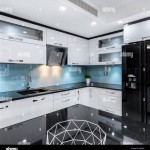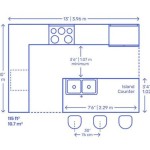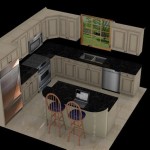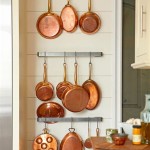The Enduring Appeal and Practicality of Butcher Block Kitchen Prep Tables
The butcher block kitchen prep table has transcended its initial utilitarian purpose to become a sought-after feature in both professional and home kitchens. Offering a robust and aesthetically pleasing workspace, butcher block tables provide a durable surface for food preparation while simultaneously enhancing the overall visual appeal of the kitchen environment. This article explores the key features, benefits, types, and maintenance considerations associated with butcher block kitchen prep tables, aiming to provide a comprehensive understanding of their value and suitability for various kitchen settings.
Understanding Butcher Block Construction and Materials
The term "butcher block" refers to a specific method of wood construction rather than a particular type of wood. Butcher block surfaces are created by joining together multiple pieces of wood, typically hardwoods, to form a thick, solid block. This construction technique yields a highly durable and stable surface resistant to warping and cracking. The orientation of the wood grain is crucial to the block's overall performance.
There are three primary butcher block construction styles:
Edge Grain: This is the most common and often the most affordable type. Edge grain butcher block features long, narrow strips of wood laid on their sides, with the edges facing up. This orientation provides a durable surface that is less prone to showing knife marks compared to some other styles.
End Grain: End grain butcher block is considered the premium option. It is constructed by arranging short pieces of wood with the ends facing up, creating a mosaic-like appearance. This orientation offers the highest level of durability and is self-healing to some extent, as the wood fibers absorb impacts and knife cuts, minimizing visible damage. End grain butcher blocks are also gentler on knives, helping to maintain their sharpness.
Face Grain (or Flat Grain): Face grain butcher block features wide, flat planks of wood glued together with their faces facing up. While visually appealing, this style is the least durable and most susceptible to showing knife marks and scratches due to the direction of the wood grain. It is generally better suited for decorative purposes rather than heavy-duty food preparation.
The choice of wood species also significantly impacts the performance and aesthetics of the butcher block. Popular wood species for butcher block include:
Maple: A widely used and cost-effective option, maple is known for its light color, tight grain, and high density. It is a durable and versatile choice suitable for a variety of kitchen styles.
Walnut: Walnut offers a rich, dark color and a distinctive grain pattern. It is a slightly softer wood than maple but still provides adequate durability for most kitchen tasks. Walnut butcher blocks add a touch of elegance and sophistication to the kitchen.
Cherry: Cherry is prized for its warm reddish-brown color and smooth texture. It is a relatively soft hardwood, so it may show scratches and dents more easily than maple or walnut. However, it is still a durable option for moderate use.
Oak: Oak is a strong and durable hardwood with a prominent grain pattern. It is available in both red and white oak varieties, each offering a slightly different color and appearance. Oak butcher blocks are a classic choice that complements a variety of kitchen styles.
Consideration should be given to the Janka hardness rating of the selected wood species. The Janka hardness test measures the resistance of wood to denting and wear. A higher Janka rating indicates a harder and more durable wood. The intended usage and level of food preparation should inform the selection of the appropriate wood species.
Advantages of Using a Butcher Block Kitchen Prep Table
Butcher block kitchen prep tables offer a range of benefits that contribute to their popularity among both professional chefs and home cooks. These advantages extend beyond mere aesthetics, encompassing functional and practical considerations.
Durability and Longevity: Constructed from solid hardwoods, butcher block tables are exceptionally durable and can withstand years of heavy use. The thickness of the butcher block provides a stable and robust surface that can handle chopping, slicing, and kneading without flexing or wobbling. With proper care and maintenance, a butcher block table can last for decades, making it a worthwhile investment.
Food Safety: While some may be concerned about hygiene, properly maintained butcher block surfaces are safe for food preparation. Wood possesses inherent antimicrobial properties that inhibit the growth of bacteria. Regular cleaning and oiling are essential to maintain the hygienic integrity of the surface. It is crucial to use food-safe oils specifically designed for butcher block to prevent rancidity and contamination.
Knife Friendliness: Unlike other countertop materials, such as granite or marble, butcher block is gentler on knives. The wood fibers yield slightly under the blade, reducing the risk of dulling the knife's edge. This property helps to prolong the life of knives and ensures efficient food preparation. End grain butcher block is particularly knife-friendly due to its self-healing properties.
Aesthetic Appeal: Butcher block adds warmth and natural beauty to any kitchen. The unique grain patterns and colors of the wood create a visually appealing focal point that complements a variety of kitchen styles, from traditional to contemporary. The natural variations in the wood ensure that each butcher block table is unique and adds character to the space.
Versatility: Butcher block kitchen prep tables are versatile and can be used for a wide range of tasks, including chopping vegetables, kneading dough, rolling out pastry, and serving food. They can also serve as a convenient staging area for preparing meals or as an extra workspace for entertaining. Some tables come equipped with additional features, such as drawers, shelves, or towel racks, further enhancing their functionality.
Portability: Many butcher block kitchen prep tables are designed to be portable, allowing them to be easily moved around the kitchen or even transported to outdoor cooking areas. Some tables are equipped with casters or wheels, making them even more convenient to move. This portability is particularly useful for small kitchens or for those who frequently entertain outdoors.
Maintenance and Care of Butcher Block Surfaces
Proper maintenance is essential to preserve the beauty, durability, and food safety of butcher block surfaces. Regular cleaning, oiling, and occasional resurfacing are necessary to keep the butcher block in top condition. Neglecting maintenance can lead to dryness, cracking, staining, and potential bacterial contamination.
Cleaning: After each use, the butcher block should be cleaned with warm, soapy water. Avoid using harsh chemicals or abrasive cleaners, as these can damage the wood. A mild dish soap is generally sufficient for removing food debris and grease. After washing, rinse the surface thoroughly with clean water and pat it dry with a clean towel. Avoid letting water sit on the surface for extended periods, as this can lead to warping or staining.
Oiling: Regular oiling is crucial to prevent the butcher block from drying out and cracking. Food-safe mineral oil or butcher block oil should be applied to the surface every few weeks, or more frequently if the wood appears dry. Apply a generous amount of oil to the entire surface and allow it to soak in for several hours, or preferably overnight. Wipe off any excess oil with a clean cloth. Oiling not only protects the wood but also enhances its natural beauty and brings out the grain patterns.
Sanitizing: While wood possesses natural antimicrobial properties, sanitizing the butcher block after preparing raw meat or poultry is recommended. A diluted solution of white vinegar and water can be used to sanitize the surface. Apply the solution to the butcher block, let it sit for a few minutes, and then wipe it off with a clean cloth. Alternatively, a commercial food-safe sanitizer can be used according to the manufacturer's instructions.
Resurfacing: Over time, butcher block surfaces may develop scratches, dents, or stains. These imperfections can be removed by sanding the surface with fine-grit sandpaper. Start with a coarser grit sandpaper to remove deeper imperfections and then gradually work your way up to finer grits to achieve a smooth finish. After sanding, thoroughly clean the surface and apply a fresh coat of butcher block oil.
Prevention: Taking preventative measures can help to minimize the need for extensive maintenance. Always use cutting boards when chopping or slicing food to protect the surface from knife marks. Avoid placing hot pots or pans directly on the butcher block, as this can cause scorching or discoloration. Wipe up spills immediately to prevent staining. Store knives and other sharp objects properly to avoid scratching the surface.
By following these maintenance guidelines, it is possible to maintain the beauty and functionality of a butcher block kitchen prep table for many years.

John Boos Classic Country Work Table

Stylewell Glenville Black Rolling Kitchen Cart With Butcher Block Top Double Drawer Storage And Open Shelves 36 W

Woodsmith Magazine Sturdy Kitchen Cart Plans Woodpeckers

Home Decorators Collection Ivory Wooden Rolling Kitchen Cart With Butcher Block Top And Storage 49 92 In W Sk19304dr1 V The

John Boos Classic Country Work Table Maple Extra Long

John Boos Jns01 Work Table Wood Top 36 W X 24 D

Black Walnut Butcher Block Table Kitchen Island Prep Bakers Etsy

Stylewell Glenville White Double Kitchen Cart

Lee S Summit Butcher Block Table Kitchen Island

John Boos Oak Kitchen Table 48 X 30 1 5 Inches Black Shelf








